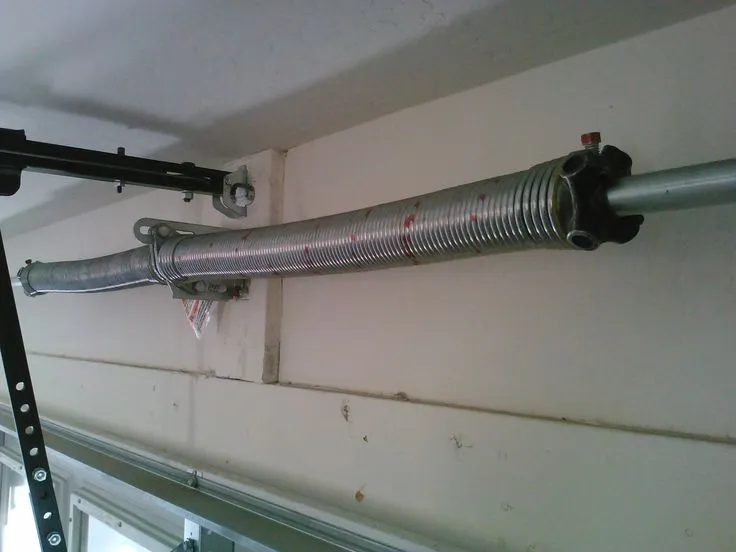Garage doors are an essential part of our homes, providing security and convenience. Have you ever wondered how these heavy doors can effortlessly open and close? The secret lies in the mechanics of garage door springs. Understanding how garage door springs work is not only fascinating but also crucial for ensuring their proper functioning. In this article, we will delve into the world of garage door springs and explore their mechanisms, types, maintenance, and more.

Section 1: Garage Door Springs Basics
Garage door springs are the unsung heroes behind the smooth operation of your garage door. There are two primary types of springs: torsion springs and extension springs.
Torsion Springs
Torsion springs are usually mounted horizontally above the garage door opening. These springs work by twisting or coiling tightly when the door is closed, storing mechanical energy in the process. When you open the door, the stored energy is released, helping the door to lift effortlessly.
Torsion springs are built with high-tensile steel and designed to withstand the immense pressure they experience during operation. The size and strength of torsion springs depend on factors such as the weight of the garage door, its height, and the number of cycles (opening and closing) the springs are expected to endure.
Extension Springs
Unlike torsion springs, extension springs are typically mounted vertically on either side of the garage door tracks. These springs expand and contract to provide the counterbalancing force required to lift and lower the door.
Extension springs stretch when the garage door closes, storing potential energy. When you open the door, the energy is released, assisting in the upward movement. Extension springs are usually accompanied by safety cables that prevent them from becoming projectiles in case of spring failure.
Both torsion springs and extension springs play a vital role in the safe and efficient operation of your garage door. It’s essential to ensure they are in good working condition for smooth door movement and to prevent potential accidents.
Section 2: Torsion Springs
Let’s take a closer look at torsion springs and understand their construction, functioning, and maintenance.
Torsion springs are tightly wound coils of steel wire, often mounted on a steel shaft above the garage door. The spring’s coils store mechanical energy when twisted tightly during door closure. This energy is then released when the door is opened, assisting in the upward movement.
The strength and longevity of torsion springs are determined by various factors, including the wire size, coil diameter, and the number of coils. It’s important to note that attempting to adjust or repair torsion springs can be dangerous, as they are under high tension. Professional assistance should be sought for any repairs or adjustments to torsion springs.
Section 3: Extension Springs
Now, let’s explore extension springs in detail, including their construction, operation, and maintenance requirements.
Extension springs work by stretching to provide the necessary force for door movement. They consist of tightly coiled springs that expand when the door is closed and contract when it is opened. These springs are typically mounted on both sides of the garage door tracks and are connected to cables that are then attached to the bottom corners of the door.
Maintaining extension springs involves regular visual inspections for signs of wear, such as stretched coils or visible damage. Lubrication is also important to reduce friction and ensure smooth operation. However, extension springs should only be adjusted or replaced by professionals due to the potential risks involved.
Section 4: Maintaining Garage Door Springs
To ensure the longevity and proper functioning of your garage door springs, regular maintenance is essential. Here are some key maintenance practices to follow:
- Perform visual inspections: Regularly examine the springs for any signs of wear, damage, or rust. If you notice any issues, it’s advisable to contact a professional technician for assistance.
- Lubricate the springs: Applying a high-quality silicone-based lubricant to the springs will help reduce friction and keep them operating smoothly. Avoid using grease or oil-based lubricants as they can attract dirt and debris.
- Seek professional maintenance: It’s recommended to schedule professional maintenance checks for your garage door system at least once a year. A trained technician can identify any potential problems, adjust spring tension if necessary, and ensure overall safety.
It’s important to note that attempting to repair or replace garage door springs without proper knowledge and experience can be dangerous. Always prioritize your safety and seek professional assistance when needed.
Conclusion
Garage door springs are the unsung heroes that enable our garage doors to open and close effortlessly. By understanding their mechanisms, types, and maintenance requirements, we can ensure the smooth operation and longevity of our garage doors. Remember to perform regular visual inspections, lubricate the springs, and seek professional assistance when needed. By giving attention to your garage door springs, you can enjoy a safe and reliable garage door system for years to come.



Leave a Reply